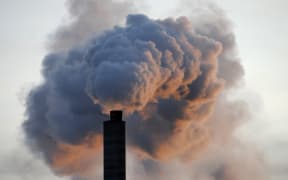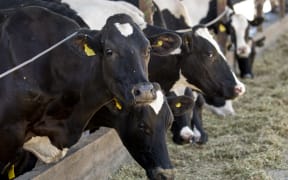OPINION: Axing the two-for-one emissions deal won't break the economy, but it won't fix the Emissions Trading Scheme (ETS) either, writes Dave Hansford.

Photo: 123RF
Climate Change Minister Paula Bennett announced yesterday that the palm-greasing two-for-one deal would finally be excised from the ETS. Under the provision, ostensibly drafted in to cosset industry from the shock of having to pay for its climate pollution, domestic emitters only had to surrender carbon units for every second tonne of emissions they produced.
The two-for-one was one of those instruments only a National government could dream up. Not only did it release business from half of its liability, it passed the rest of that liability to the public to pay - another example of a business subsidy by stealth. Worse, it effectively halved the price of carbon, undermining the entire object of the scheme.
The most pointed measure of its worth is that we will barely notice it is gone. The NZIER says that, at a carbon price of $25 a tonne in 2020, scrapping two-for-one will dent GDP by a tenth of one per cent - about eight hours of economic activity. According to MBIE, you might pay another 2c a litre for fuel.
But the planet won't miss it either: the move will save around half a million tonnes of CO2 equivalents going into the atmosphere, pared off a projected 83 million tonnes by 2020 - a 0.6 per cent reduction.
Most of those modest emissions cuts will come from gas and coal power generation, while the rest will come from road transport. The most useful thing about Ms Bennett's decision is that it leaves the door open to lifting the $25/tonne carbon price cap as well, something that might at least send a signal to industry that the government is finally taking emissions trading seriously.
For most of its life, the ETS has facilitated the transfer of emissions units that were all but worthless. After an initial spring to around $20.00/tonne in 2010, prices collapsed to around 50c, pressed to the floor by an incomprehensible provision that allowed emitters to buy 'hot air' credits - duly shown to be fraudulent - from Ukraine and Russia for a few cents each (the door to that rort closed mid-last year).
Meanwhile, the government continued to flood the market with its own units, with the net result that some 140 million of them - fully five years' worth of activity - are out there somewhere, doing precisely nothing for the climate. They've been stockpiled by speculators for a rainy day.
There's not a single tonne of emissions anyone can find that's been prevented by the ETS - if anything, it's worsened them - yet the Government's consultation document insists it will be the "main policy tool" to deliver us from climate change, even though pastoral farming, the source of nearly half our emissions are exempt.
It's a pig, and consulting about amendments is merely choosing the colour of lipstick to apply. Businesses serious about thriving in a carbon-constrained economy have practically pleaded for a carbon charge, just so they know where they stand. Instead, they've been left trying to keep their balance on a policy platform heaving like a ship in a storm.
The only strong signal last week came from nature - February smashed all previous temperature records out of the park.
*Dave Hansford is a freelance science and environment writer and blogger.





